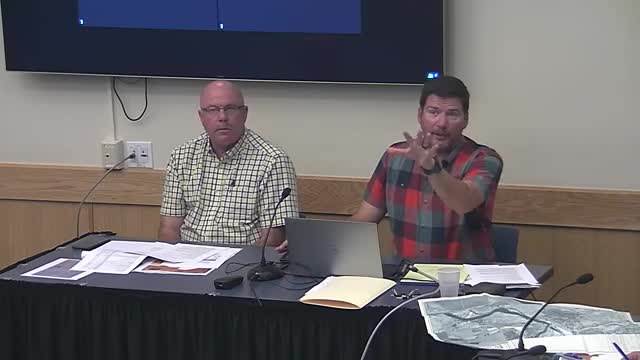Flood zone changes spark housing concerns and insurance fears
August 28, 2024 | Klamath County, Oregon
This article was created by AI summarizing key points discussed. AI makes mistakes, so for full details and context, please refer to the video of the full meeting. Please report any errors so we can fix them. Report an error »

In a recent government meeting, officials discussed the implications of updated flood zone maps and their impact on local residents and housing markets. The conversation highlighted the challenges faced by homeowners in flood-prone areas, particularly regarding insurance costs and building regulations.
One key point raised was the uncertainty surrounding the number of homes affected by the new flood zone classifications, particularly in areas previously designated as flood plains. Officials acknowledged the need for further data to assess the situation accurately. The discussion also touched on the potential for existing homeowners to be \"grandfathered\" into previous regulations, although clarity on this issue was deemed necessary from FEMA representatives.
The meeting revealed concerns about the affordability of housing in light of rising insurance premiums, which could price out many residents. Some officials noted that an influx of new residents from states like California, where housing costs are significantly higher, has contributed to local growth, despite the challenges posed by flood insurance.
Participants also discussed the technical aspects of building in flood zones, including the process for obtaining a Letter of Map Amendment (LOMA) or a Letter of Map Revision (LOMR). These processes allow property owners to contest their flood zone designation, provided they can demonstrate that their property meets specific elevation criteria.
The meeting concluded with a call for updated mapping data using advanced technologies like LIDAR to improve the accuracy of flood zone classifications, which could have significant implications for future development and zoning regulations. As officials continue to navigate these complex issues, the community remains alert to the potential impacts on housing and safety in flood-prone areas.
One key point raised was the uncertainty surrounding the number of homes affected by the new flood zone classifications, particularly in areas previously designated as flood plains. Officials acknowledged the need for further data to assess the situation accurately. The discussion also touched on the potential for existing homeowners to be \"grandfathered\" into previous regulations, although clarity on this issue was deemed necessary from FEMA representatives.
The meeting revealed concerns about the affordability of housing in light of rising insurance premiums, which could price out many residents. Some officials noted that an influx of new residents from states like California, where housing costs are significantly higher, has contributed to local growth, despite the challenges posed by flood insurance.
Participants also discussed the technical aspects of building in flood zones, including the process for obtaining a Letter of Map Amendment (LOMA) or a Letter of Map Revision (LOMR). These processes allow property owners to contest their flood zone designation, provided they can demonstrate that their property meets specific elevation criteria.
The meeting concluded with a call for updated mapping data using advanced technologies like LIDAR to improve the accuracy of flood zone classifications, which could have significant implications for future development and zoning regulations. As officials continue to navigate these complex issues, the community remains alert to the potential impacts on housing and safety in flood-prone areas.
View full meeting
This article is based on a recent meeting—watch the full video and explore the complete transcript for deeper insights into the discussion.
View full meeting
